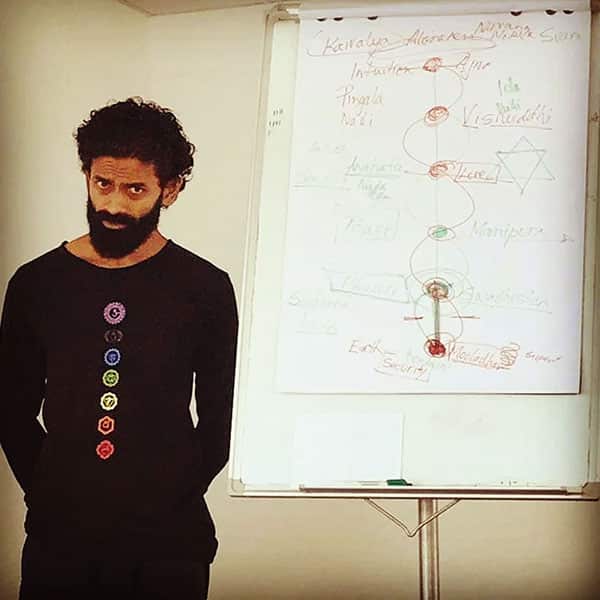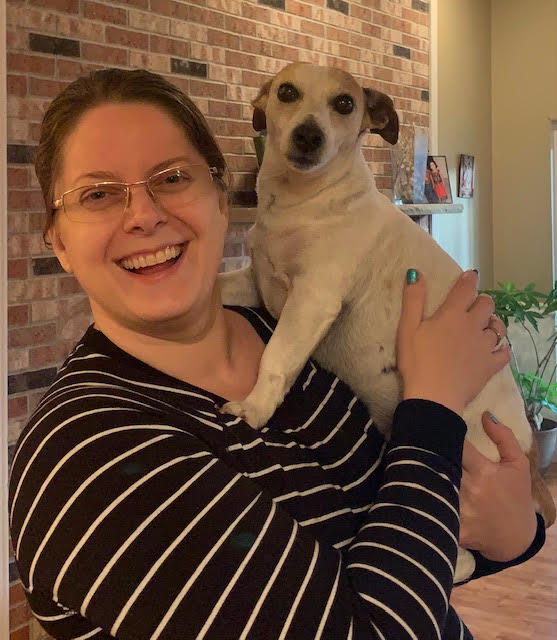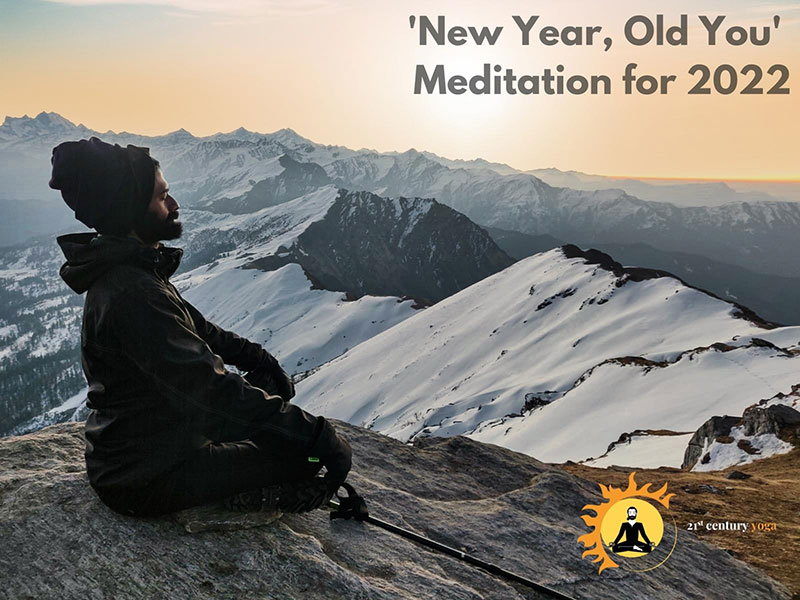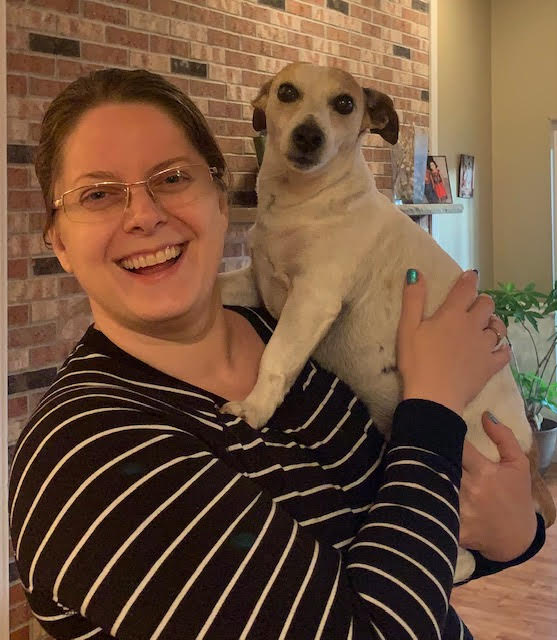“If you are depressed you are living in the past. If you are anxious you are living in the future. If you are at peace you are living in the present.” – Unknown
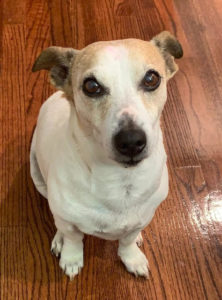 Meet Sam my dog, a 14 year old Jack Russell Terrier, whom we adopted 2 years back.
Meet Sam my dog, a 14 year old Jack Russell Terrier, whom we adopted 2 years back.
He took a flight from Ukraine to US to come to us (it was a with-in family adoption). Before his final immigration, Sam traveled to more countries than the majority of humans on this planet. Born in South Africa, he moved to Tanzania, UK, Ukraine. And, yes, he does have his own passport!
By the time he reached our family, Sam was considerably anxious. Or so I think, based on month-long incontinence issues and defensive growling at the kids. To top it all off, while going for an evening bio-break, he was attacked by a neighbor’s German Shepherd who seemed to be offended at Sam’s choice of a location to fertilize the plants. After 3 broken ribs, torn muscles, and 2 surgeries to fix the mangled mess, poor Sam was fed antidepressants along with pain meds to help him deal with dog PTSD. I’m serious. No joke. He has a diagnosis. And then, we also moved to a new house.
For Sam, it was about his 6th new home. Again, incontinence and clean up, digestion issues, hiding and shaking under chairs, barking and whining…all…night…long!
The second night in the new house, we had a thunderstorm. Lightning and thunder shook the house, but I was already awake. Sam was losing it! I walked downstairs in hopes to calm him down and then sneak back to bed. Armed with lavender diffuser (for me) and CBD oil (for Sam), I hoped he would calm down enough to not wake up the kids. I tried waiting for him to sleep and tip toeing away, but he would immediately wake and I’d restart the process (just like my girls when they were babies!)
Eventually, we both slept on the couch, with Sam curled at my feet. While waiting for him to doze off, I started thinking about all the trauma he’s been through that led him to this point. I wondered if he actually remembered all the moving, changes, the attack. Then my thoughts took me to what memory may look like for a dog (hmmm) and if, maybe, he “thinks in pictures” or if his behavior is a purely reflexive thing.
I thought about memory and language – Noam Chomsky and BF Skinner visited my mind, then Cesar Millan did a drive by when I found myself frustrated at my own plight of being awake at 3am because of my “spoiled dog”, who probably just needs more training. This angry thought was interrupted by a loud snore. Turns out, Sam didn’t care about any of that stuff, but, as I realized, I was the one doing entirely too much thinking. At this point, it wasn’t Sam’s anxiety, but mine that wasn’t allowing me to sleep (along with Sam’s loud snoring). Anxiety is a product of our Nervous System (NS), specifically the sympathetic part of our nervous system.
The sympathetic NS is responsible for the fight or flight, as well as the freeze-“play dead”/”deer in the headlights” responses, all of which are aimed at helping us survive a dangerous situation. It helps dilate our pupils to zoom in on danger, pumps adrenaline, increases our breathing and heart rate, directs the blood flow away from digestion and into major muscles, readying for a run for your life activity, if need be.
During the caveman years of evolution, this allowed our ancestors to engage in animal behavioral responses and outrun a chasing sabertooth. And through “survival of the fittest” genes, that helped us all be here today! The amygdala in our brains still functions as a watchdog for threats and the headquarters of the sympathetic NS, constantly revisiting our memory for past dangers and sounding the alarm if any similarities are found in the present. That is what we may call a “trigger” or “emotional memory”.
Unfortunately, our fast-paced 5G world has not only turned us into dopamine junkies, but also pushed our brains to continuously sound false alarms by frequent activation of the sympathetic NS. Despite serving a life saving function in the past, the overactive sympathetic NS is actually slowly killing this generation by causing chronic stress, depression, and anxiety. Emotional stress is a major contributor to the six leading causes of death: cancer, heart disease, accidents, respiratory disorders, cirrhosis of the liver and suicide.
According to Occupational Health and Safety news, up to 90% of all visits to the doctors are for stress-related concerns. On average, chronic stress shortens human life expectancy by 2.8 years. Lucky for us, we have another part of our nervous system- the parasympathetic NS, responsible for helping us relax and revitalize, heal and digest. It helps undo the damage done to us by us.
It helps us conserve energy, assimilate and metabolize nutrients, needed for physical health, limits heat loss and slows the heart. Medical science tells us this mostly happens automatically, involuntarily, because that’s how our autonomic nervous system works.
So, what hope is there for people (and dogs) with varied degrees of anxiety? Is medical/biological intervention the only way to stop our sympathetic nervous system from overreacting? And if we blunt our emotional and behavioral responses with medication, will our sympathetic NS still work in situations of real danger?
Well, here’s a big surprise – yoga can help with that! Not sure if it would help my dog, but, people? – absolutely! Although, I do see Sam regularly practicing his Adho- and Urdhva-Mukha Svanasanas, so maybe I am wrong about that. Yoga is the most well-known secret in the world and the biggest gift to humanity. Sometime between 500 BCE and 400 CE, an Indian sage, Patanjali synthesized and compiled the knowledge on the yoga science in The Yoga Sutra text. This collection of 195 aphorisms cuts to the heart of what is yoga is in its second sutra:
योगश्चित्तवृत्तिनिरोधः ॥२॥ yogaś citta-vṛtti-nirodhaḥ “Yoga is the cessation of modifications of the mind.”
For thousands of years, saints and yogis, knew exactly how to activate our parasympathetic nervous system through asana, pranayama, and meditation in order to obtain a healthy body and stabilize the mind. Patanjali has laid out a road map based on the knowledge previously passed on mainly through guru–shishya tradition between teacher and disciple. Today’s science is just beginning to scratch the surface of what goes on in our brains and in our minds.
Mindfulness-based stress reduction therapies are growing in the West as people begin to understand that our breath is central to the somatopsychic impact – our ability to influence the activity of our own nervous system and change internal emotional states through physical activity (asana and pranayama). So after all, our parasympathetic nervous system can be under our own control!
Even to the modern skeptic, through experimental analysis using fMRI technology, science is beginning to validate what yoga has been able to demonstrate for thousands of years – that through dedicated continuous practice, one takes a journey from the outer (where anxieties or “vrittis” appear) to the inner, where one is peaceful, present, and connected, and may even possibly eventually attain moksha- a lofty goal for most of us. But even if moksha is not your cup of tea, reducing the volatility of our mind through yoga practice makes life enjoyable, instead of miserable from constant stresses and anxiety.
And if you still need proof that yoga is effective, ask Sam. He’ll tell you how much his human (yours truly) has improved!
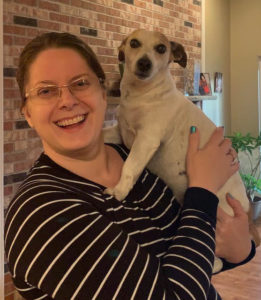 Svetlana Iyer is a special educator and a behaviour analyst by professional training. She runs a school for children with Autism in India and teaches future generations of teachers and therapists in a graduate program for Applied Behavior Analysis in the US. She has been a yoga student with Total Yoga during her 6-year stint in India and is continuing her learning virtually with 21st Century Yoga. She loves painting, swimming, dog walking, goofing around with her family, and as you may have guessed it – yoga!
Svetlana Iyer is a special educator and a behaviour analyst by professional training. She runs a school for children with Autism in India and teaches future generations of teachers and therapists in a graduate program for Applied Behavior Analysis in the US. She has been a yoga student with Total Yoga during her 6-year stint in India and is continuing her learning virtually with 21st Century Yoga. She loves painting, swimming, dog walking, goofing around with her family, and as you may have guessed it – yoga!

